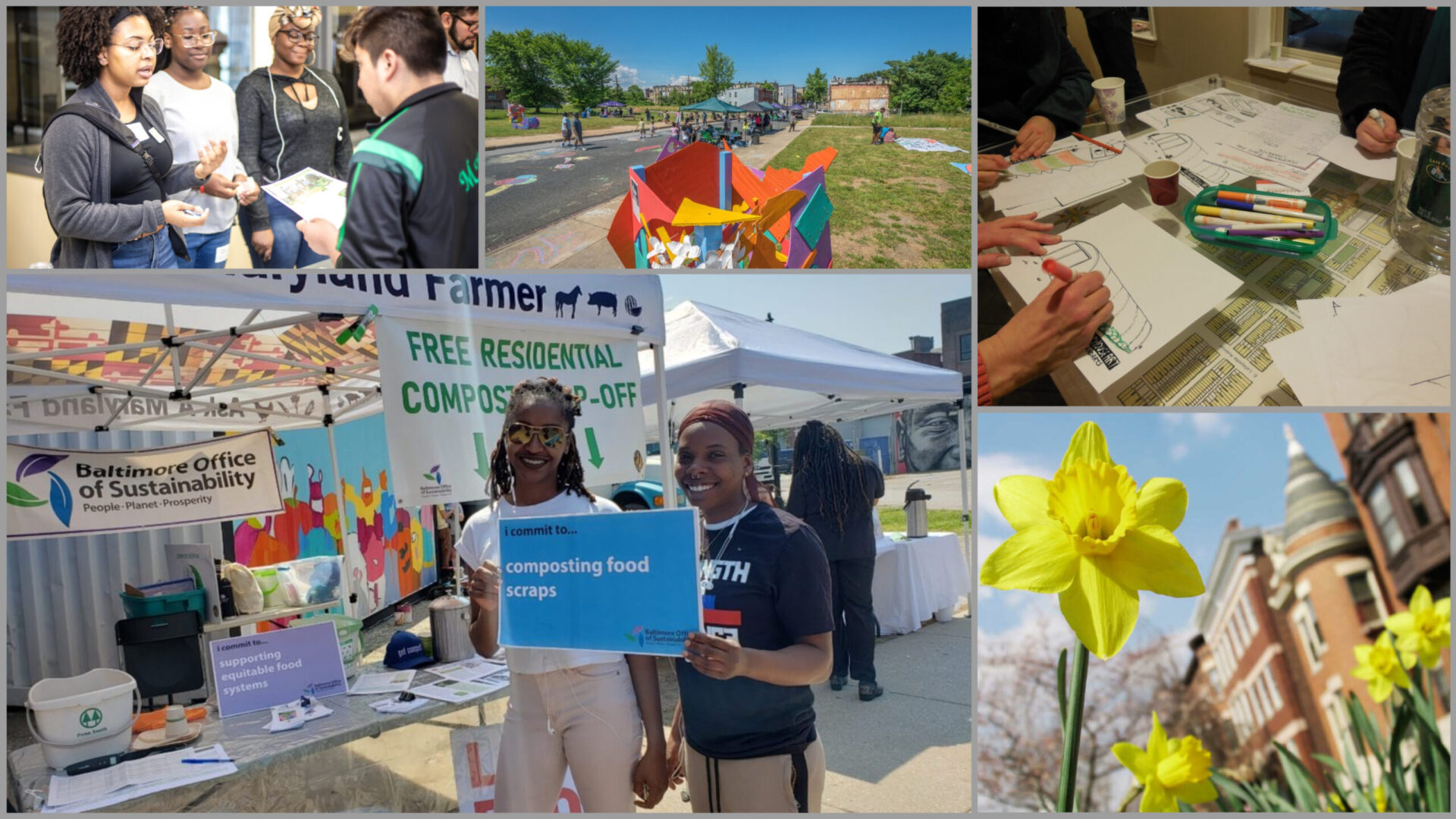Sustainability improves the quality of life while balancing the need for environmental protection, societal progress, and economic growth. Beyond improving the vibrancy of our communities, the City of Baltimore is working to build resilience into planning efforts and ongoing initiatives. In Baltimore City, resilience is defined as the ability of our community to anticipate, accommodate, and positively adapt to or thrive amidst changing climate conditions or hazard events and enhance quality of life, reliable systems, economic vitality, and conservation of resources for present and future generations.
Baltimore is vulnerable to many natural hazards, ranging from coastal storms and flooding to extreme heat and wind. There is strong consensus these events will increase with frequency and intensity in coming years. Identifying vulnerabilities and finding ways to prevent damage and grow in the face of emergency or hardship enhances the longevity of our city and its people.
Resilience has been addressed as a key component of the Disaster Preparedness Project and Plan (DP3), a pro-active and collaborative approach to protecting Baltimore’s people, infrastructure, assets and environment. Specifically, resilience planning is instituted across five key areas:
Health and Wellbeing
- Ensure the preparedness and strength of emergency response systems and programs
- Anticipate, address and prepare for future health hazards caused by weather events or changing climate
- Protect essential resources and ensure stability of critical emergency facilities
Infrastructure
- Ensure reliability of key infrastructure including transportation, energy, stormwater, wastewater, and drinking water systems
- Integrate climate adaptation strategies into design and maintenance of infrastructure
- Improve new and existing buildings to adapt to changes in climate and weather events
Environment
- Increase interconnectivity of green spaces and natural features to increase biodiversity and assist in mitigating hazards
- Increase the resilence of the city’s urban forest
- Enhance coastal buffer efforts to increase floodwater management
Economy and Society
- Designate community leaders to respond in crisis situations, ensure cohesive and engaged communities
- Ensure resiliency of housing stock, providing safe and affordable housing that conserves energy and adapts to changing climate
- Protect economic prosperity in the face of emergency or long term changes in climate
Leadership and Policy
- Integrate climate change and natural hazards planning into private and state documents, systems, operations and management
- Develop policy which requires hazard mitigation principles to be incorporated into capital improvement projects
- Enhance building codes, strengthen zoning to integrate anticipated changes in climate

